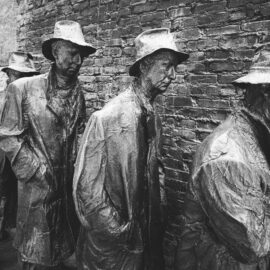

This article is an excerpt from the Shortform book guide to "Caste" by Isabel Wilkerson. Shortform has the world's best summaries and analyses of books you should be reading.
Like this article? Sign up for a free trial here .
What is implicit racism? What role does it play in propagating of the white supremacist ideology?
Implicit racism is a term that refers to racist beliefs, attitudes, and stereotypes that people harbor without conscious knowledge. Implicit racism differs from overt racism in that the associated behaviors are invisible and often unintentional.
Keep reading to understand implicit racism and its consequences.
What Is Implicit Racism?
The resentments stoked by those at the top easily become truth because of inherent biases against the subordinate caste. After a lifetime of absorbing negative stereotypes and opinions about marginalized groups, people don’t realize they have them. This is the essence of implicit racism—racist sentiments people harbor without conscious awareness.
Dominant caste members may act in prejudicial ways toward others based on preconceived judgments, even when they believe they’re progressive thinkers. The consequences of bias are disparities in who people hire, rent apartments to, sell houses to, admit into educational institutions, and provide medical care for. One study even showed that white felons were more likely to be hired than a black person with no criminal record.
Implicit racism in health care has detrimental effects for the middle and subordinate castes. Black patients receive poorer care and less treatment for the same 60 procedures covered by Medicaid as white patients do, despite suffering more illnesses. Doctors are also more reluctant to prescribe pain medications to people of color than white patients, but this tendency has actually reversed the direction of benefit within the caste system.
In withholding pain medications from marginalized patients, doctors actually safeguarded them from the catastrophic epidemic of opioid addiction. Conversely, in readily prescribing opioids to white patients, doctors created a pathway for this group to become consumed by this addiction. In fact, opioid addiction is one of the most significant contributors to the increase in mortality rates of middle-aged white Americans.
Compounding this issue is the way bias created a lack of preparation for how to address this form of drug addiction. In the ’80s and ’90s, black communities were ravaged by the introduction of crack cocaine into their communities. This highly addictive drug ruined lives, damaged families, and increased gang violence. Overnight, black communities changed from residential neighborhoods to battlegrounds for turf.
Federal and state governments took no action because they saw the issue as a black problem. Instead of providing substance abuse treatment solutions for these communities, they incarcerated addicts, resulting in the current disproportionate number of black inmates in today’s penitentiaries. If officials had created treatment frameworks to help the subordinate caste, those systems would be in place now to help the thousands of white Americans suffering from opioid addiction.

———End of Preview———
Like what you just read? Read the rest of the world's best book summary and analysis of Isabel Wilkerson's "Caste" at Shortform .
Here's what you'll find in our full Caste summary :
- How a racial caste system exists in America today
- How caste systems around the world are detrimental to everyone
- How the infrastructure of the racial hierarchy can be traced back hundreds of years






